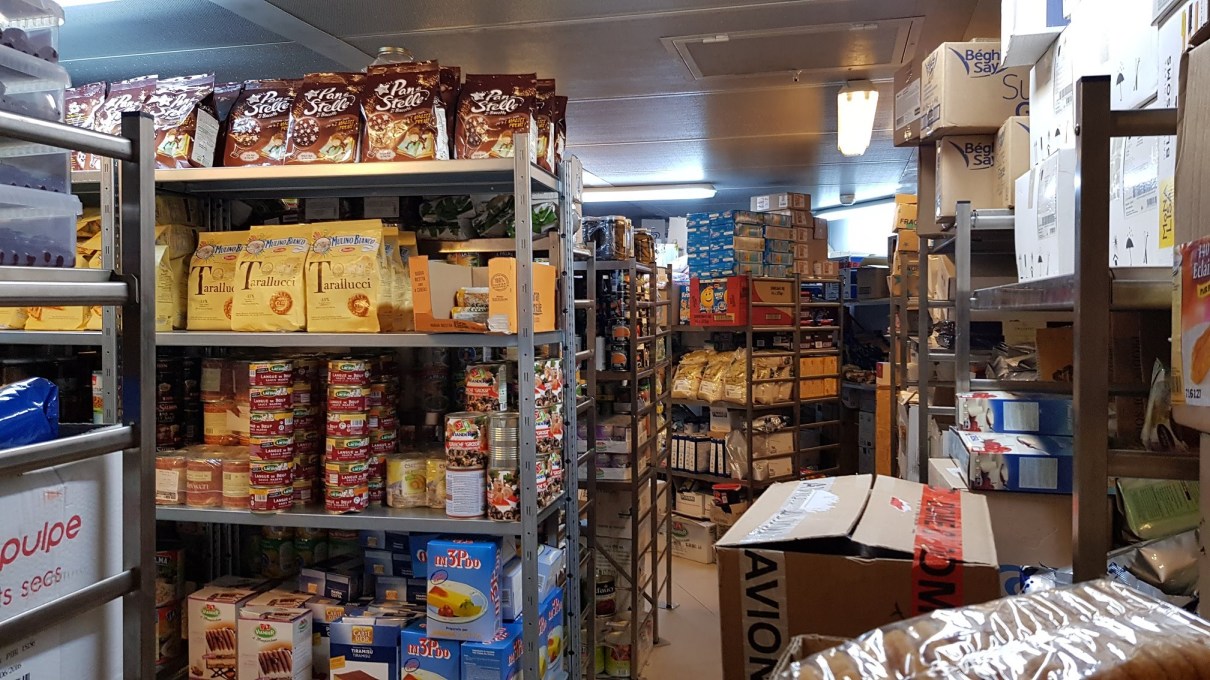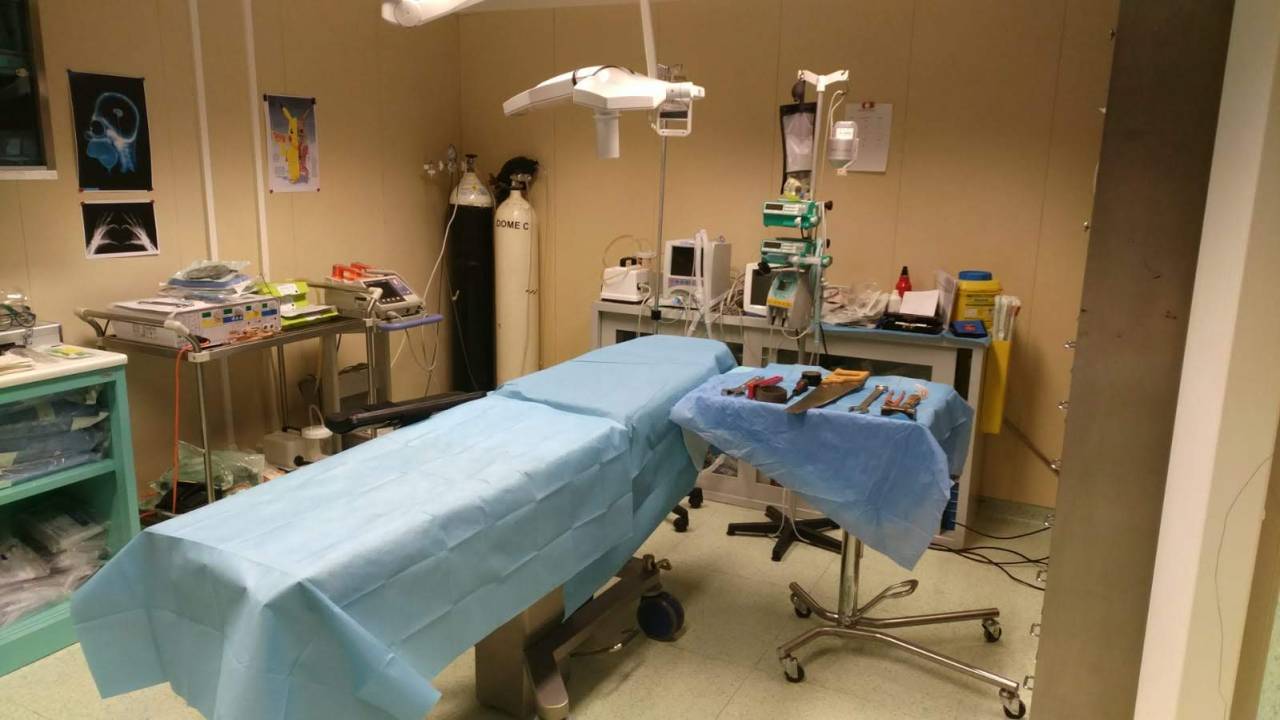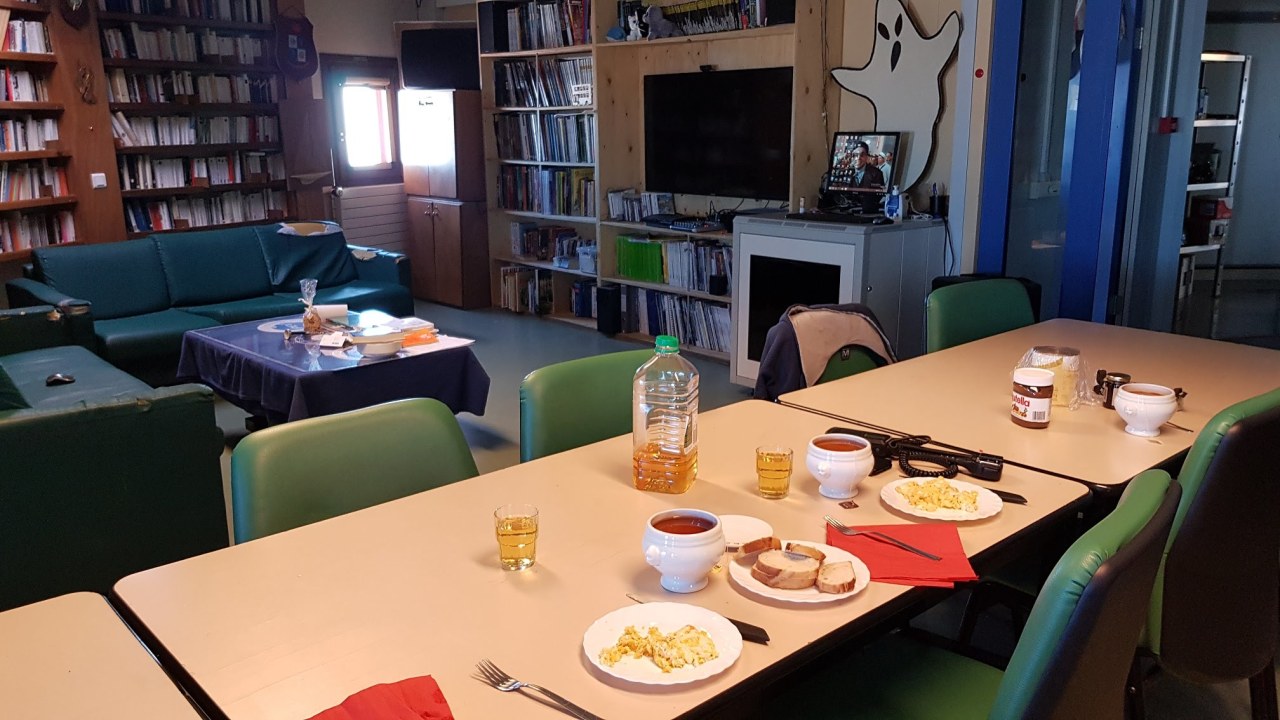Dr. Carmen Possnig is the ESA-sponsored medical doctor spending 12 months at Concordia research station in Antarctica. She facilitates a number of experiments on the effects of isolation, light deprivation, and extreme temperatures on the human body and mind. In the following post, Carmen walks us through a day in the life of Concordia.
A typical day looks different for each of us. The technical team has fixed working hours from 8:30 to 17:30 and they must be ready at all times should there be a problem. We have an alarm system for technical problems, and these alarms are particularly popular in the middle of the night. As they are so loud, we all sit upright in our beds as soon as they go off. It reminds me very much of doing night shifts in a hospital and I am very happy that I can simply fall asleep again after these alarms.
Scientists are employed depending on the type of work. Our glacier researcher has to go out every day to count snowflakes and change filters. Our meteorologist cleans the weather station every morning and lets his weather balloon rise every evening.
Our radio and IT specialist sits in the radio room and takes care of maintaining communication so that nobody gets lost.
Our cook dances through the kitchen listening to music and our doctor waits (so far in vain) for a medical emergency. Our astronomer cleans his telescopes daily and programs the search for exoplanets.
My working month is divided into days with blood tests and days with simulated flights in the Soyuz capsule. On the blood collection days, depending on which of my teammates I meet in the lab, the alarm usually rings much too early. All other doors are closed all around, and I am one of the first ones to get up.
Then I go yawning down the stairs of the quiet tower, through the corridor to the noisy tower; In the corridor in front of the entrance door I take a look at the monitor showing the current weather situation, disbelievingly shake my the head, then shuffle on up twice as many stairs to the living room on the second floor.
Breakfast is eaten at the dining table in the living room. The choice is large, but most eat biscuits. Eggs are now only enjoyed by the more adventurous among us – they expired in January, but still taste relatively normal, stored at +4°C, though they are now so dry that you need a lot of persuasion to get them out of their shells. The easiest way to separate egg yolk and egg white is with scissors.
Looking for the last pack of grapefruit juice, I wobble sleepily towards the storage room one floor down. Here I meet another early riser in our mini market, looking for his favourite muesli.

The supermarket – here you can find hidden treasures again and again, with a lot of luck only expired a few years ago (but everything still edible). Credits: ESA/IPEV/PNRA–C. Possnig
On the way back to the quiet tower I have to leave the station, but only a few steps away. A few meters behind the entrance door is my polystyrene box full of snow, which I placed there the day before. Sometimes, when you open the door first in the morning, you get a shower full of snow, sometimes a gust of wind that takes your breath away, sometimes brilliant sunshine, sometimes a white wall.
I then go back to the quiet tower. Right next to my lab is the office of the Station leader: here Cyprien sits behind his computer and writes on a paper, takes care of outreach or does the planning for next week’s dishwashing service. Walking through this office you get to Filippo, our atmospheric physicist. He usually sits in front of his nine computers, listening to music, following the path of his radiosondes, learning German or physiology, and guarding the biscuit stock on the floor.
Back in my lab, the blood tubes are being processed. Each of these tubes wants to be treated differently. Some of them want to be treated on the previously mentioned snow (I have to mix it with water before, otherwise it is too cold and the blood freezes immediately. This mistake is made only once); others immediately go into the centrifuge; others want to stand around for an hour before, into the 37°C warm water bath; or as fast as possible be divided into six more tubes and mixed with antibodies, magnetic beads, buffer A-XY, bioparticles or other reagents.

The operating theatre – here equipped for a film shoot and accordingly no original surgical instruments. Credits: ESA/IPEV/PNRA–A. Razeto
At the end I take a blood count and some blood values in our hospital. This is on the first floor of the quiet tower, and fully equipped for any emergencies. There is an operating room with video conferencing option in a hospital in Rome, should help be needed, a dentist’s chair, an examination room with an extensive pharmacy and a patient’s room.
To read Carmen’s adventures at Concordia in German, see her personal blog.








Discussion: no comments